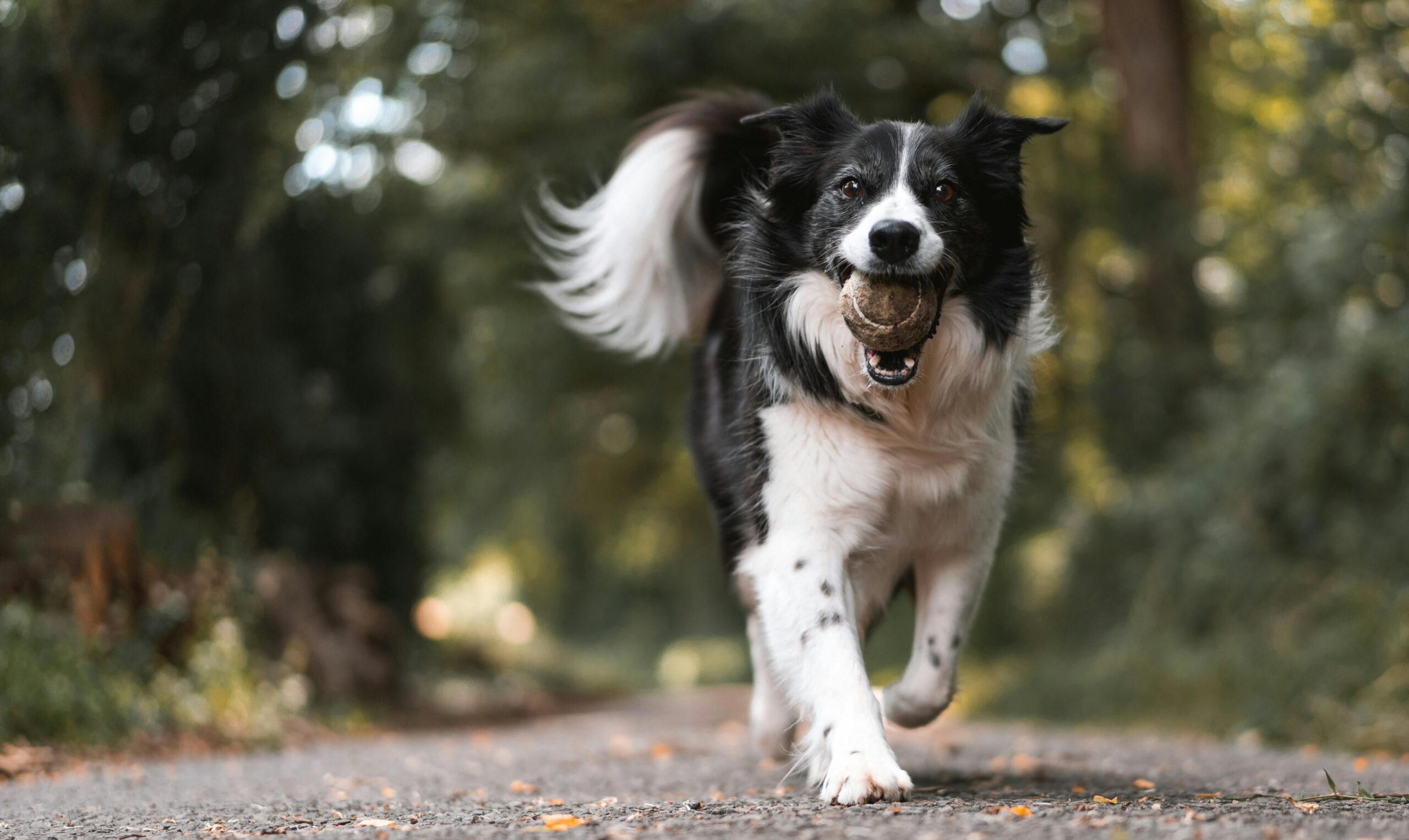Your cart is currently empty!

How Do I Teach My Dog to Play Fetch?
You toss a ball across the yard, fully expecting a game of fetch, only to see your dog look at you like you’ve just asked them to do your taxes. Does this sound familiar? Maybe they chase it down but then wander off without bringing it back, or they stand there, puzzled, watching the ball roll away.
So, you want to learn how to teach your dog to play fetch? Fetch seems simple enough, but if your dog is not interested, it can be a bit frustrating (and, let’s admit it, a little embarrassing at the dog park).
But don’t worry—teaching a dog to fetch is all about learning and, most importantly, having fun together!
Why Some Dogs Don’t Know How to Play Fetch
Many dogs are born with a natural instinct to chase, but the idea of bringing something back isn’t always second nature. Here are some common reasons a dog might struggle with fetch:
- Lack of Interest: Some dogs just don’t find toys or balls all that exciting, preferring other types of play.
- Inexperience: If your dog wasn’t introduced to toys or retrieving games early on, the concept might be completely new.
- Confusion: Your dog may understand the “chase” part but not the “return” part, making them feel uncertain about what to do.
Desired Behaviors to Encourage
If fetch isn’t coming naturally, try encouraging these alternative behaviors to create a foundation for a successful game of fetch:
- Chasing and Picking Up the Toy: Help your dog see the toy as something worth pursuing and picking up.
- Returning the Toy to You: Teach your dog to bring the toy back instead of wandering off or stopping halfway.
- Dropping the Toy on Command: Once they’re back with the toy, train them to drop it near you so the game can continue.
Training Commands for Fetch
To make fetch click, let’s start with a few basic commands that can be built up over time.
- “Get It”: Teach your dog to chase and pick up a toy or ball.
- “Come”: Reinforce recall by calling your dog back to you with the toy.
- “Drop It”: Encourage them to release the toy near you so you can throw it again. It is best when you are using a chuck-it or don’t want you hand to get slobbery.
- “Hand”: This is a variation of drop it because it allows your dog to put it directly in your hand (I also use it when my dog is chewing an unknown object – it works great!)
I’ll never forget the first time I tried fetch with my own dog, Penny. I was so excited—I had bought the perfect rubber ball, and we went out to the park to play. I threw it with all the enthusiasm in the world… and she watched it land like it was the most boring thing she’d ever seen.
I thought, “Surely she’ll get it!” So, I walked over, picked up the ball, and threw it again. The result? A big yawn, and then she abandoned me to sniff another dog’s butt. Luckily, I always had Roxy to ignore all but me and the ball (Asher has followed closely in her footsteps). Did Penny eventually learn to fetch—absolutely—but she much preferred playtime with other pups.




Check out our Etsy store to see our “I make fetch happen” gear.
Practice Progressions
Here’s a step-by-step plan for teaching each command to help your dog master fetch over time.
“Get It”
- Level 1: Hold the toy in front of your dog, say “Get it,” and encourage them to grab it. Reward immediately when they take the toy in their mouth.
- Level 2: Toss the toy just a few feet away, say “Get it,” and reward when they chase it. If they pick it up, even better!
- Level 3: Gradually increase the distance of your throws, saying “Get it” each time. Praise them for chasing and picking up the toy.
“Come”
- Level 1: With the toy in their mouth, call your dog back to you with “Come,” offering a treat or reward when they return.
- Level 2: Begin practicing in slightly distracting environments, like the backyard, reinforcing with treats each time they return.
- Level 3: Use the “Come” command as they chase after a thrown toy, rewarding when they bring it all the way back.
“Drop It”
- Level 1: When your dog brings the toy back, hold a treat in front of their nose and say “Drop it.” Reward the moment they release the toy.
- Level 2: Use “Drop it” as they’re getting close to you. Give a treat for dropping the toy right at your feet.
- Level 3: Gradually start using “Drop it” without showing a treat, rewarding them only after they release the toy on command.
Conclusion
Teaching your dog to play fetch may take a bit of patience, but the results are worth it! By using positive reinforcement and breaking down each step, you’re helping them enjoy the game and building a fun bond along the way. Remember, every small win is a step toward turning “What’s that ball?” into “I make fetch happen!”



